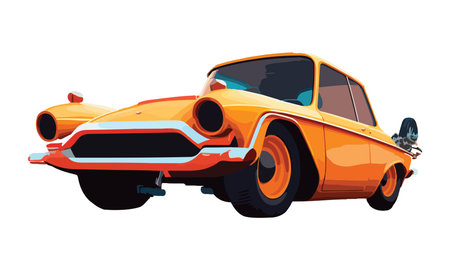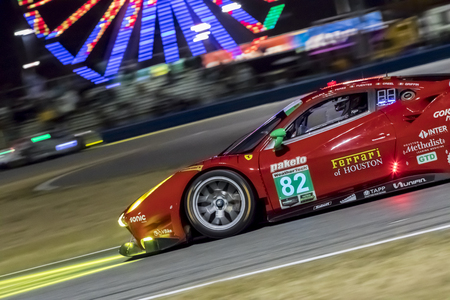1. Introduction: Defining the Modern Sports Car
Sports cars have always been about speed, power, and a thrilling driving experience. But in the 21st century, these machines have evolved significantly. With advancements in technology, aerodynamics, and performance engineering, modern sports cars are faster, more efficient, and smarter than ever before. So, what exactly makes a sports car exceptional in this era?
Speed: More Than Just Horsepower
In the past, a sports cars performance was often judged by its horsepower. While power is still crucial, modern sports cars also rely on aerodynamics, lightweight materials, and advanced traction systems to achieve incredible speeds.
| Key Speed Factors | Why It Matters |
|---|---|
| Horsepower & Torque | Determines raw acceleration and top speed. |
| Aerodynamics | Enhances stability and reduces drag at high speeds. |
| Weight Reduction | Lighter materials improve agility and efficiency. |
| Advanced Tires | Better grip for improved traction and cornering. |
Technology: Smarter, Faster, and Safer
Modern sports cars are not just about brute force—they are also packed with technology that enhances performance and driving experience. From semi-autonomous driving aids to real-time performance monitoring, today’s sports cars are smarter than ever.
Advanced Driving Systems
Many high-performance cars now feature launch control, adaptive suspension, and dynamic driving modes, allowing drivers to optimize performance for different conditions.
Hybrid and Electric Innovations
Hybrid and all-electric sports cars have redefined speed and efficiency. Models like the Porsche 918 Spyder and the Tesla Roadster show that electric powertrains can deliver breathtaking acceleration without sacrificing sustainability.
Design: Function Meets Aesthetics
A great sports car is not just fast and high-tech—it also has an iconic design. Modern sports cars balance aggressive, aerodynamic styling with comfort and usability.
Lightweight Materials
The use of carbon fiber, aluminum, and other lightweight materials helps improve speed, efficiency, and handling.
Aerodynamic Efficiency
Features like active aerodynamics, adjustable spoilers, and air vents help manage airflow for better performance and stability.
In the 21st century, sports cars are more than just powerful engines—they are precision-engineered masterpieces that combine speed, advanced technology, and striking design. As we explore the top 10 sports cars of this era, we will see how these elements come together to create some of the most exhilarating machines on the road.
2. Pioneering Performance: Breakthroughs in Speed and Power
The 21st century has been a golden era for sports cars, with automakers constantly pushing the boundaries of performance. Advances in engineering have led to unprecedented levels of horsepower, blistering acceleration times, and record-breaking top speeds. Let’s explore some key innovations that have shaped modern sports cars.
Turbocharging and Hybrid Performance
Turbochargers have revolutionized modern sports cars by enhancing power output while maintaining efficiency. Additionally, hybrid technology—once associated with fuel economy—has been harnessed to boost performance. Cars like the Ferrari LaFerrari and McLaren P1 use hybrid electric motors to provide instant torque, improving acceleration and overall power delivery.
Unbelievable Horsepower
In the early 2000s, 500 horsepower was considered extreme. Today, we see production cars exceeding 1,000 horsepower, thanks to advanced engine design, lightweight materials, and forced induction technologies. Here’s a look at some of the most powerful sports cars of the 21st century:
| Car Model | Horsepower | 0-60 mph (Seconds) | Top Speed (mph) |
|---|---|---|---|
| Bugatti Chiron | 1,479 hp | 2.4 | 261 |
| Koenigsegg Jesko | 1,600 hp | 2.5 | 300+ |
| Hennessey Venom F5 | 1,817 hp | 2.6 | 311 |
| Rimac Nevera | 1,914 hp | 1.85 | 258 |
Aerodynamic Innovations
Sports cars achieve mind-blowing speeds not just through raw power but also through aerodynamic efficiency. Active aerodynamics, such as adjustable spoilers and air vents, help optimize downforce and reduce drag. One notable example is the McLaren Senna, which features an adjustable rear wing that adapts in real time to improve handling and stability at high speeds.
Lightweight Materials
Weight reduction plays a crucial role in enhancing performance. Carbon fiber, titanium, and aluminum have become standard materials in high-performance sports cars. Brands like Porsche, Ferrari, and Lamborghini extensively use these materials to improve power-to-weight ratios, allowing for exceptional speed and agility on both the road and track.
Conclusion
From insane horsepower figures to cutting-edge aerodynamics and material innovations, sports cars of the 21st century are redefining what’s possible in automotive performance. As technology continues to evolve, future sports cars will likely become even faster, more powerful, and more efficient.

3. Three, Top 10 Sports Cars: Icons of the 21st Century
The 21st century has been a game-changer for the sports car industry. Automakers have pushed the boundaries of speed, power, and innovation, creating machines that are not just fast but also technologically advanced and influential. Here’s a curated list of the top ten sports cars that have defined this era, considering factors like performance, innovation, and impact on the automotive industry.
1. Bugatti Veyron
The Bugatti Veyron shattered records when it was first introduced. With a quad-turbocharged W16 engine producing over 1,000 horsepower, it set new benchmarks for speed and engineering excellence.
2. McLaren P1
McLaren’s P1 was a true hypercar pioneer, blending hybrid technology with extreme performance. Its combination of a twin-turbo V8 and an electric motor delivered an incredible 903 horsepower.
3. Ferrari LaFerrari
Ferrari’s first hybrid supercar, the LaFerrari, pushed the boundaries of performance with its hybrid powertrain, featuring a 6.3L V12 and electric motor for a total of 950 horsepower.
4. Porsche 918 Spyder
The 918 Spyder proved that hybrid technology could enhance performance. Its 4.6L V8 and electric motors combined for 887 horsepower while delivering impressive fuel efficiency.
5. Nissan GT-R (R35)
Nicknamed “Godzilla,” the R35 GT-R redefined what a high-performance sports car could be with its twin-turbo V6, all-wheel drive, and impressive track capabilities.
6. Ford GT (2017)
A modern tribute to the legendary GT40, the 2017 Ford GT combined aerodynamic excellence with a twin-turbo V6, generating 647 horsepower.
7. Lamborghini Aventador
The Aventador made a statement with its naturally aspirated V12, producing up to 770 horsepower in its final edition. Its aggressive design and thrilling performance made it an icon.
8. Chevrolet Corvette C8
The first mid-engine Corvette marked a major shift for the American sports car. With its 6.2L V8 producing up to 495 horsepower, it offered supercar-like performance at an affordable price.
9. Tesla Roadster (2020)
Redefining electric performance, the second-gen Tesla Roadster promised a 0-60 mph time of under 2 seconds and a range of over 600 miles—setting new standards for EV sports cars.
10. Koenigsegg Jesko
The Jesko raised the bar with extreme aerodynamics and a 5.0L twin-turbo V8, generating up to 1,600 horsepower. It was built for both speed and track performance.
Comparison Table: Key Specs of the Top 10 Sports Cars
| Car Model | Horsepower | Acceleration (0-60 mph) | Top Speed |
|---|---|---|---|
| Bugatti Veyron | 1,001 hp | 2.5 sec | 253 mph |
| McLaren P1 | 903 hp | 2.8 sec | 217 mph |
| Ferrari LaFerrari | 950 hp | 2.6 sec | 217 mph |
| Porsche 918 Spyder | 887 hp | 2.5 sec | 211 mph |
| Nissan GT-R (R35) | 565 hp | 2.9 sec | 196 mph |
| Ford GT (2017) | 647 hp | 3.0 sec | 216 mph |
| Lamborghini Aventador | 770 hp | 2.8 sec | 218 mph |
| Chevrolet Corvette C8 | 495 hp | 2.9 sec | 194 mph |
| Tesla Roadster (2020) | ~1,000 hp | <2.0 sec | 250+ mph |
| Koenigsegg Jesko | 1,600 hp | 2.5 sec | 300+ mph |
These cars are more than just machines; they are engineering marvels that represent the best of what the 21st century has to offer in automotive technology and performance.
4. Innovative Technologies: The Future of Sports Cars
Sports cars have always been about power and speed, but the future is shaped by cutting-edge technologies that enhance performance, efficiency, and safety. From hybrid powertrains to advanced aerodynamics and intelligent driving systems, modern sports cars are redefining the driving experience.
Hybrid Powertrains: A Perfect Blend of Power and Efficiency
Gone are the days when sports cars solely relied on massive gas engines. Today, hybrid powertrains are integrating electric motors with traditional combustion engines to boost power while improving fuel efficiency. Take a look at some notable hybrid sports cars:
| Model | Powertrain | Horsepower | 0-60 mph Time |
|---|---|---|---|
| McLaren P1 | 3.8L Twin-Turbo V8 + Electric Motor | 903 hp | 2.8 sec |
| Ferrari SF90 Stradale | 4.0L Twin-Turbo V8 + Electric Motors | 986 hp | 2.5 sec |
| Porsche 918 Spyder | 4.6L V8 + Electric Motors | 887 hp | 2.6 sec |
Aerodynamics: Sculpting Speed and Stability
Aerodynamic innovations are crucial in making sports cars faster and more stable. Features like active spoilers, air channels, and lightweight materials help reduce drag while maximizing downforce. Some key aerodynamic advancements include:
- Active Aerodynamics: Adaptive wings and flaps adjust based on speed for optimal performance.
- Carbon Fiber Components: Lightweight materials lower weight while maintaining structural strength.
- Venturi Tunnels: Channel airflow beneath the car to enhance stability and grip.
Smart Driving Systems: Enhancing Performance and Safety
Technology is not just about speed; it also improves driver experience and safety. Modern sports cars feature intelligent driving systems that assist in high-speed maneuvers and everyday driving.
Advanced Driving Technologies
- Launch Control: Ensures optimized acceleration for perfect starts.
- Torque Vectoring: Distributes power to individual wheels for better handling.
- AI-Driven Driving Modes: Adjusts suspension, engine response, and traction in real-time.
- Augmented Reality Displays: Provides crucial driving data on windshields for better situational awareness.
The Future of Sports Cars
With ongoing advancements in electrification, aerodynamics, and automation, sports cars are becoming more powerful yet eco-friendly. The future will likely introduce fully electric hypercars, AI-assisted driving, and even more advanced materials to push the boundaries of performance.
5. Five, Conclusion: The Evolution of Speed and Performance
Reflecting on the past two decades of sports car evolution and predicting future trends in the industry.
Sports Cars: A Journey Through Innovation
Over the last 20 years, sports cars have undergone a massive transformation in terms of technology, power, and efficiency. Manufacturers have pushed the limits of engineering, blending speed with innovation like never before.
Key Advancements in Sports Cars
| Era | Key Innovations |
|---|---|
| 2000s | Improved aerodynamics, lighter materials, and high-performance V8 and V12 engines. |
| 2010s | Hybrid powertrains, advanced driver assistance systems, and turbocharged efficiency. |
| 2020s | Electric supercars, AI-enhanced driving systems, and carbon fiber dominance. |
The Future of Sports Cars
As the industry moves forward, sports cars will continue to evolve with new technology. The rise of electric and hybrid performance cars suggests a shift towards sustainability without compromising speed.
Key Trends to Watch
- More electric hypercars with instant torque and extended range.
- Increased use of lightweight materials for better efficiency and speed.
- Advanced autonomous driving features for enhanced safety and performance.
- Greater customization with AI-assisted vehicle dynamics.
The 21st century has been an exciting era for sports cars, and the next decades promise even greater advancements in speed, power, and innovation.


